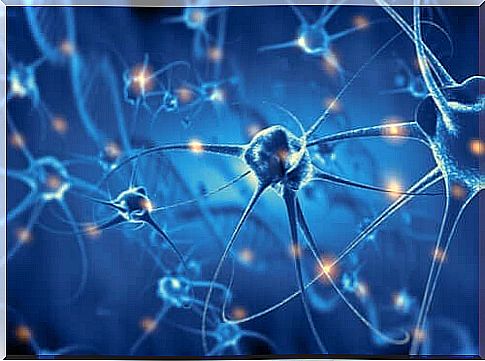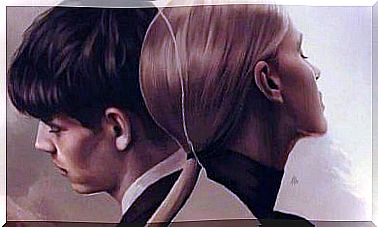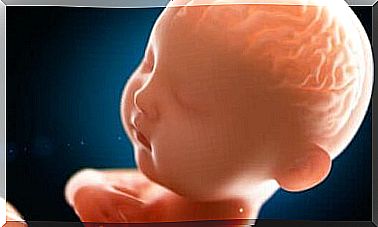What Happens In The Brain When You Train?

Exercise has several physical, mental and social benefits. In addition to strengthening your immune system and preventing certain diseases, it can also improve your mood, your self-esteem and your appearance. From a physiological point of view, exercise is excellent for cardiovascular and respiratory health. But what effect does exercise have on your mental health? What happens in the brain when you exercise?
Exercise regulates the secretion of neurotransmitters, which are chemical cells responsible for communication between nerve cells. It also plays a role in neurogenesis, which is a process by which the body repairs and regenerates nerve cells. All this gives rise to a healthy brain and good cognitive function. Below we will take a closer look at what these processes mean.

How the brain forms new nerve cells when you exercise
Many people believe that aging in combination with certain habits leads to the death of nerve cells. However, in recent years, science has shown that this is not the case. Researchers have seen how nerve cells can repair themselves, find compensatory mechanisms and increase the efficiency of the networks they form. This ability is called neuroplasticity and it is crucial for development, learning and recovery from injuries.
Within the framework of changes that take place in the brain when you exercise , neurogenesis is one of the mechanisms of neuroplasticity. But the formation of new neurotransmitters is not something that happens in the whole brain. The hippocampus, olfactory lobe and subventricular zone of the lateral ventricles are the areas of the brain where this phenomenon occurs.
Over the past decade, researchers have focused their efforts on determining which factors promote neurogenesis and which inhibit it. And the two factors they have identified so far are an enriching environment and physical activity.
How does it happen?
Researchers do not yet know exactly how physical activity affects neurogenesis. However, they have sufficient evidence to conclude that exercise increases the production of BDNF (acronym for brain-derived neurotrophic factor , brain derived neurotrophic factor) and VEGF ( Vasucular endothelial growth f actor , that is, vascular endothelial growth factor).
BDNF and VEGF are proteins that stimulate nerve cell survival and blood vessel formation, respectively.
- BDNF
Researchers have found that BDNF levels in the brain double and even triple when you exercise, to return to normal values about an hour later. They link the elevated protein level with an annual increase of two percent of hippocampal volume. During the normal aging process, the hippocampus instead decreases by one to two percent per year.
Simply put, physical activity increases the expression of the NMDA receptor on the nerve cells in the hippocampus. The activation of these receptors raises the calcium level in the synapses, which triggers the activation of the nerve pathways that ultimately regulate the expression of BDNF proteins. Subsequently, BDNF activates another receptor (TrkB) that is found in parent cells in the hippocampus, which stimulates the formation of new nerve cells.
- VEGF
Although the mechanism linking VEGF to neurogenesis is still unclear, researchers believe it plays a direct as well as an indirect role. On the one hand, it causes changes in the parent nerve cells. On the one hand, it increases the number and circumference of blood vessels. An increase in the number of blood vessels and the circumference of the blood vessels improves circulation and thus cell health. Researchers have observed that physical exercise and the increase in VEGF that it causes, increases the production of parent cells and reduces cell death. This is done through a change in the activation of macrophages (cells in the immune system that eat up foreign substances).

Signal substances
Furthermore, physical exercise triggers a growth of different types of neurotransmitters. When you train, the body produces i.a. more catecholamines, neurohormones that prepare the body to respond to stressful, threatening and physically demanding situations.
Other neurotransmitters in this group are norepinephrine, dopamine and adrenaline. The increase in these substances and of endorphins is the explanation why physical exercise increases your well-being.
Another consequence of exercise is the reduction of cortisol, the so-called stress hormone. Therefore, the harmful effects that cortisol has on the body are also reduced.
Learning and cognitive function
The process of neurogenesis, and neuroprotection in general, takes place mainly in the hippocampus. This area of the brain is specifically designed for spatial learning and the consolidation of long-term and short-term memory. With regard to the effects of exercise on the brain, there are therefore several studies that indicate that regular physical activity improves learning and memory.
And, as if this were not enough, the effects also seem to include other cognitive skills, depending on the positive effects on mood and stress reduction. Processing speed, decision making and selective attention can all be improved with the help of physical exercise. In short, exercise seems to be associated with a general increase in cognitive ability.









